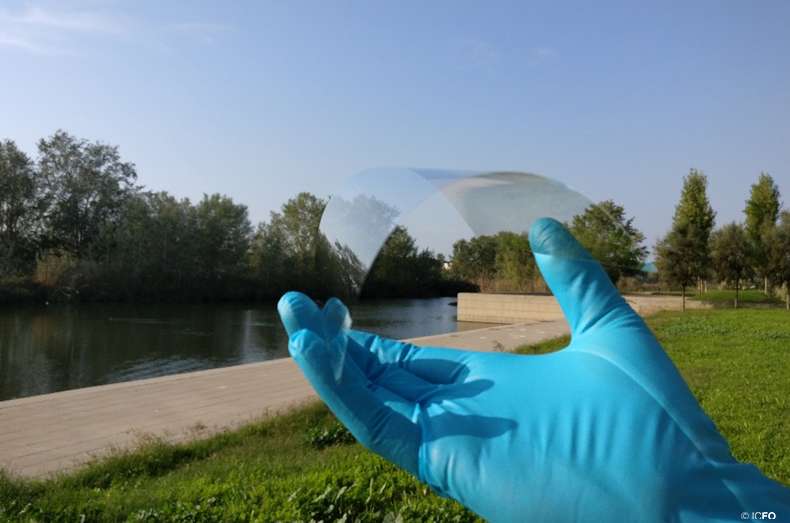Researchers develop flexible transparent conductor free of reflection and scattering

Transparent conductors are one of the key elements such electronic and optoelectronic devices as displays, light emitting diodes, photovoltaic cells and smart phones. Most of the current technology is based on the use of the semiconductor indium tin oxide (ITO) as a transparent conducting material. However, even though ITO presents several exceptional properties, such as a large transmission and low resistance, it still lacks mechanical flexibility, needs to be processed at high temperatures and is expensive to produce.
Reseachers seek alternative flexible TC materials that could definitively replace ITO. While the scientific community has investigated materials such as Al-doped ZnO (AZO), carbon nanotubes, metal nanowires, ultrathin metals, conducting polymers and graphene, none of these present optimal properties to replace ITO.
Today, ultrathin metal films (UTMFs) have been shown to provide very low resistance, although their transmission is also low; antireflection (AR) undercoat and overcoat layers are thus added to the structure. ICFO researchers have developed a room-temperature processed, multilayer transparent conductor optimizing the antireflection properties to obtain high optical transmissions and low losses with high mechanical flexibility properties. They have recently published their results in Nature Communications.
In their study, ICFO researchers applied an Al-doped ZnO overcoat and a TiO2 undercoat layer with precise thicknesses to a highly conductive Ag ultrathin film. By using destructive interference, the researchers showed that the proposed multilayer structure could lead to an optical loss of approximately 1.6 percent and an optical transmission greater than 98 percent in the visible spectrum. Prof. Valerio Pruneri says, "We have used a simple design to achieve a transparent conductor with the highest performance to date, and at the same time, other outstanding attributes required for relevant applications in industry." This result represents a record fourfold improvement in figure of merit over ITO and also presents superior mechanical flexibility in comparison to this material.
The results of this study show the potential that this multilayer structure could have in future technologies that aim at more efficient and flexible electronic and optoelectronic devices.
More information: Rinu Abraham Maniyara et al. An antireflection transparent conductor with ultralow optical loss (<2 %) and electrical resistance (<6 Ω sq−1), Nature Communications (2016). DOI: 10.1038/ncomms13771
Journal information: Nature Communications
Provided by ICFO


















